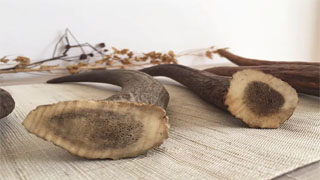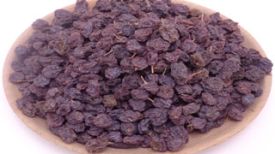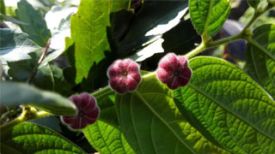
Harvesting and processing: Cutting horns: Between October and February of the following year, after killing the deer, cut off the skull and remove the remaining meat, wash and air dry. Withdrawing horns: also known as "shedding horns", "losing horns" or "losing horns", it refers to the natural shedding of male deer during the horn replacement period, so it does not have a skull. Mostly harvested between March and April.
Medicinal parts: ossified horns or horn bases that fall off in the spring of the following year after sawing mushrooms
Origin: Jilin, Liaoning, Heilongjiang, Shandong, Beijing, Shanghai, etc
Science: Deer family
Original plant: Red deer
Deer Antlers - Characteristics of Deer Medicinal Materials:
Deer antlers: branching, usually divided into 4-6 branches, with a total length of 50-120cm. The main branch is curved, with a diameter of 3-6cm, disk-shaped at the base and irregular nodular protrusions on top, commonly known as the "pearl disk", with sparse and small pores around it. The lateral branches extend in multiple directions, with the first branch being closer to the pearl disk and extending at a right angle or obtuse angle to the main stem. The second branch extends closer to the first branch and is commonly referred to as the "seated branch"; The second and third branches are far apart. The surface is gray brown or gray yellow, glossy, with smooth corners, and often has wart like protrusions in the middle and lower parts, commonly known as "bone nails", and has intermittent longitudinal shuttles of varying lengths, commonly known as "bitter melon edges". Hard in texture, with bone on the outer ring of the cross-section, gray white or slightly light brown in color, and mostly gray brown or bluish gray in the middle, with honeycomb shaped pores. Odorless, with a slightly salty taste.
Deer antlers detached from the disc: in the shape of a helmet or flat helmet, with a diameter of 3-6cm (pearl disc diameter 4.5-6.5cm) and a height of 1.5-4cm. The surface is gray brown or gray yellow, with a glossy finish. The bottom is flat, honeycomb shaped, often yellow white or yellow brown in color. There are often sparse and small holes around the pearl plate. Above, it is slightly flat or irregularly shaped like a hemisphere. Hard in texture, with bone on the outer ring of the cross-section, gray white or off white in color.
High quality products are preferred to be robust, solid, and free from decay.
Deer antler medicinal properties:
Deer Antlers - Salty in taste, warm in nature, non-toxic, mainly used for nourishing qi and yang, strengthening bone marrow, continuing to heal injuries, treating lumbar and spinal pain, heart and abdominal pain, lack of abdominal blood and acute pain, loss of sperm and blood during urination, night dream ghost interaction, treating women with residual blood in the cell and wanting to die, and treating malignant sores and abscesses. It is boiled into powder called Deer Antlers Cream, which can treat spleen and stomach deficiency and cold, nausea and vomiting, and diarrhea.
【 Discussions from Various Schools 】
1. "Gangmu": Deer antlers, when used raw, dissipate heat, promote blood circulation, reduce swelling, and ward off evil; Mature use can benefit the kidneys, supplement deficiency, strengthen essence, and promote blood circulation. Refining frost and making cream is specialized in nourishing.
2. "Compendium of Materia Medica": Antlers, when raw, taste salty and warm, but only dissipate heat, promote blood circulation, reduce swelling, and dispel evil qi. Xianneng people have soft and firm blood, and warm energy can dispel evil. Therefore, they mainly deal with malignant tumors, expel evil qi, and retain blood in the yin, causing less abdominal blood and pain, and causing damage and evil blood. If there is a deficiency of liver and kidney, it is a pain in the waist and spine. Salt and warmth enter the kidneys to nourish the liver, hence the main cause of lumbar spine disease. Belonging to yang, it can supplement yang and also nourish qi.
3. The Classic of Canon: It is mainly used for treating malignant sores, abscesses, and swelling, expelling evil spirits and qi, and leaving blood in the yin.
4. "Bielu": In addition to acute pain in the lower abdomen due to blood, pain in the waist and spine, and the presence of malignant blood in the injured area, it is recommended to nourish qi.
5. "Qian Jin · Shi Zhi": Take a square inch dagger with scraps, three days a day, nourish qi, strengthen bone marrow, and repair injuries.
6. Meng Qiao: A female dream lover, with deer antlers that are not three fingers long, and served with clear wine; The remaining blood in the woman's womb was not exhausted, and she wanted to die. She wore a square inch dagger with sake and deer antler ash, three days and one night.
7. "Rihuazi Bencao": Treat sores, abscesses, swelling, heat, toxins, etc., apply vinegar and massage; Sperm removal, hematuria, water massage, and oral administration; Pediatric tongue and goose mouth sores, burn and iron them.
Clinical application: Treatment of acute mastitis. File the antlers into fine powder and pack them into capsules, 0.5g per capsule. Take 2-4 capsules each time, 4-6 times a day. 27 cases were treated, and except for 1 case where medication was ineffective for 3 days and switched to other drugs, the rest were cured. The initial treatment has better therapeutic effects. "
[Preparation] Wash, cut into sections, soak in warm water, remove, pound into pieces, air dry; Or file it into coarse powder.
[Taste] Salty, warm.
Return to the liver and kidney meridians.
【 Indications 】 Warm kidney yang, strengthen muscles and bones, promote blood circulation and reduce swelling. Used for erectile dysfunction, nocturnal emissions, cold and painful waist and spine, genital ulcers, early onset of breast abscess, blood stasis, swelling and pain.
【 Usage and Dosage 】 6-15g.
[Storage] Store in a dry place.


